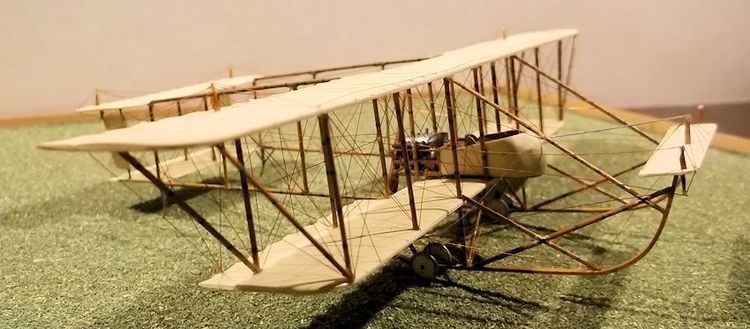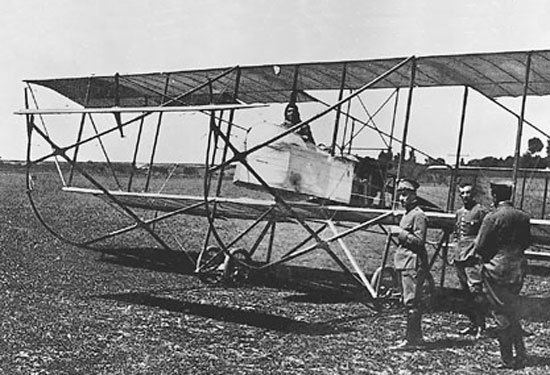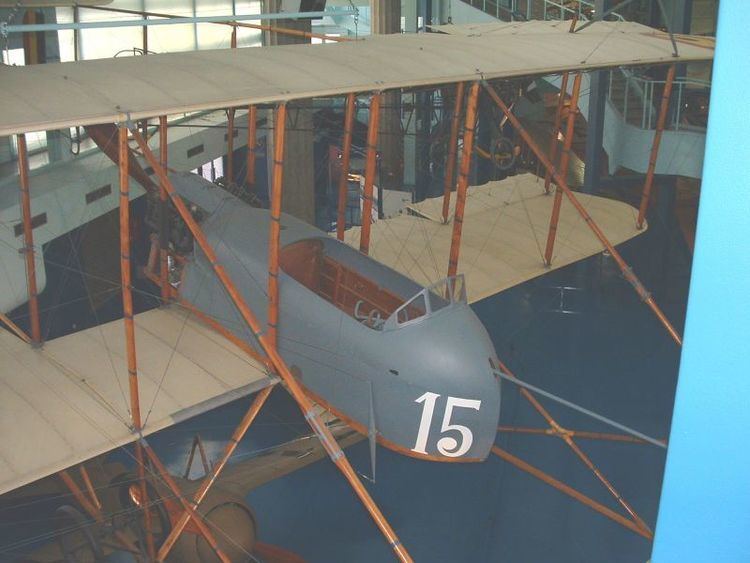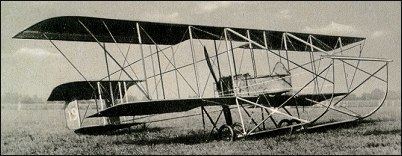Top speed 95 km/h Length 11 m | Wingspan 15 m Retired 1915 | |
 | ||
The Maurice Farman MF.7 Longhorn is a French biplane developed before World War I which was used for reconnaissance by both the French and British air services in the early stages of the war before being relegated to service as a trainer.
Contents

Design and development

The "Longhorn" was a three bay biplane with a forward elevator mounted on upcurved extensions of the landing skids and an empennage carried on four booms consisting of biplane horizontal stabilisers with an elevator attached to the trailing edge of the upper surface and twin rudders. The airframe was constructed using a combination of ash and silver spruce, and many of the members including the outer interplane struts and the outrigger booms carrying the tail surfaces were hollow. It was powered by a Renault air-cooled V8 engine driving a pusher propeller mounted at the back of a fabric-covered nacelle. The propellor was mounted on the engine's camshaft, and therefore revolved at half the engine speed. Its name derived from the distinctive front-mounted elevator and elongated skids.

The design originated with Maurice Farman's second aircraft, which was built in 1910. This was 12.75 m (41.8 ft) long and had upper and lower wings both spanning 11 m (36 ft). The wings had rounded ends and the outer pair of interplane struts were fabric covered to form voisin-style side curtains. The undercarriage was also of Voisin pattern, with a pair of mainwheels mounted on trailing arms below the skids. Lateral control was effected by ailerons mounted on the lower wings only. Pitch control was effected solely by a front-mounted elevator, the tail surfaces consisting of biplane fixed stabilising surfaces and twin rudders. The gap between the wings was 1.5 m (5 ft).

The side curtains were soon removed, and subsequent aircraft, including that flown by Maurice Tabateau to win the 1910 Coupe Michelin, had square-ended wings and modified tail surfaces, with an elevator added to the upper rear stabiliser.

The 1911 Maurice Farman aircraft flown to win the Michelin Puy de Dôme prize had an increased wingspan, the upper wing spanning 16 m (52 ft 6 in) and the lower 14.5 m (47 ft 7 in). Ailerons were mounted on both upper and lower wings. The undercarriage now had two pairs of wheels attached to the skids using elastic cords.

The Maurice Farman is the subject of a detailed technical description in the issue of Flight dated 6 July 1912. This describes it as a new type, but also notes that in essence the design was at least two years old. The aircraft described differs fom earlier aircraft principally in having a 2 m (6 ft 7 in) gap between the wings.
Early civil flights
Early versions of the design were used for instruction purposes at Maurice Farman's flying school at Buc.
On October 28, 1910 Maurice Tabateau won the Coupe Michelin prize by flying 464.72 km (288.76 mi) in 6hr 1min 35sec
On 7 March 1911 Eugène Renaux flew an example to win the Michelin Prize offered for a passenger-carrying flight from Paris to the summit of the Puy de Dôme.
A variant with an extra bay, increasing the span of the upper wing to 20 m (66 ft), was used by Géo Fourny to set an endurance record of 720 km (450 mi) in 11 hr 29 m 11 sec on 2 September 1911. This was one of the two aircraft entered by Maurice Farman for the French military aircraft competition held in November 1911. The second aircraft was of similar span, but was rigged so that it had staggered wings.
Military use
Operators
Survivors
Specifications (MF.7)
Data from Encyclopedia of Military Aircraft
General characteristics
Performance
